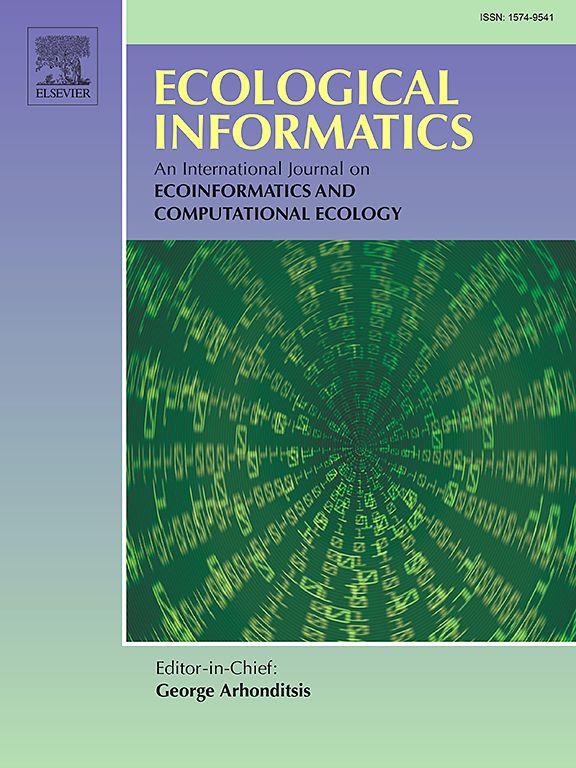耕地扩张和城市扩张,哪个对生态系统恢复力的影响更大?来自时空分析的见解
IF 5.8
2区 环境科学与生态学
Q1 ECOLOGY
引用次数: 0
摘要
生态系统恢复力是区域生态安全和生态系统可持续发展的关键。耕地扩张和城市扩张都会影响生态效益;然而,其影响的相对程度和空间格局仍未得到充分探讨。利用Fragstats和ArcGIS软件,研究了2000 - 2020年天山北坡经济带(NSEBTM)土壤土壤利用效率的时空演变与分布特征。采用地理信息图普法、区域统计和标准差椭圆分析相结合的方法,评价和比较了耕地和城市扩张对生态适应性扩展(EAE)和生态权衡扩展(ETE)的影响。在整个研究期间,NSEBTM的ER水平一直很低,2010年出现转折点,随后逐渐改善。空间上,ER呈“西北高、东南低”的分布格局,高值区集中在西北,低值区分散在东南。耕地扩张和城市扩张均对生态承载力产生双重影响,其中,东部和中部地区的生态承载力影响最大,东部地区的生态承载力影响最大。值得注意的是,与城市扩张相比,耕地扩张对生态承载力的负面影响更广泛、更强烈,耕地变化影响的面积更大,生态权衡更为明显。这些发现突出表明,需要采取可持续的土地利用战略,使生态保护与农业和城市发展的需求相协调。本文章由计算机程序翻译,如有差异,请以英文原文为准。
Which exerts a greater impact on ecosystem resilience: Cropland expansion or urban expansion? Insights from a spatiotemporal analysis
Ecosystem resilience (ER) is pivotal for regional ecological security and sustainable ecosystem development. Both cropland expansion and urban expansion impact ER; however, the comparative magnitude and spatial patterns of their effects remain underexplored. This study investigates the spatiotemporal evolution and distribution characteristics of ER in the Northern Slope Economic Belt of the Tianshan Mountains (NSEBTM) from 2000 to 2020, using Fragstats and ArcGIS. A combination of the Geo-informatic Tupu method, Zonal Statistics, and Standard Deviation Ellipse analysis was employed to assess and compare the positive (ecological adaptive expansion, EAE) and negative (ecological trade-off expansion, ETE) impacts of cropland and urban expansion on ER. ER levels in the NSEBTM remained low throughout the study period, with a turning point occurring in 2010, followed by gradual improvement. Spatially, ER exhibited a “northwest high, southeast low” distribution pattern, with high-value regions clustering in the northwest and low-value regions dispersing in the southeast. Both cropland and urban expansion exerted dual impacts on ER, with ETE effects dominating in the central and western areas and EAE effects prevailing in the eastern areas. Notably, cropland expansion had broader and more intense negative impacts on ER than urban expansion, with cropland changes affecting larger areas and exhibiting more pronounced ecological trade-offs. These findings highlight the need for sustainable land-use strategies that reconcile ecological preservation with the demands of agricultural and urban development.
求助全文
通过发布文献求助,成功后即可免费获取论文全文。
去求助
来源期刊

Ecological Informatics
环境科学-生态学
CiteScore
8.30
自引率
11.80%
发文量
346
审稿时长
46 days
期刊介绍:
The journal Ecological Informatics is devoted to the publication of high quality, peer-reviewed articles on all aspects of computational ecology, data science and biogeography. The scope of the journal takes into account the data-intensive nature of ecology, the growing capacity of information technology to access, harness and leverage complex data as well as the critical need for informing sustainable management in view of global environmental and climate change.
The nature of the journal is interdisciplinary at the crossover between ecology and informatics. It focuses on novel concepts and techniques for image- and genome-based monitoring and interpretation, sensor- and multimedia-based data acquisition, internet-based data archiving and sharing, data assimilation, modelling and prediction of ecological data.
 求助内容:
求助内容: 应助结果提醒方式:
应助结果提醒方式:


